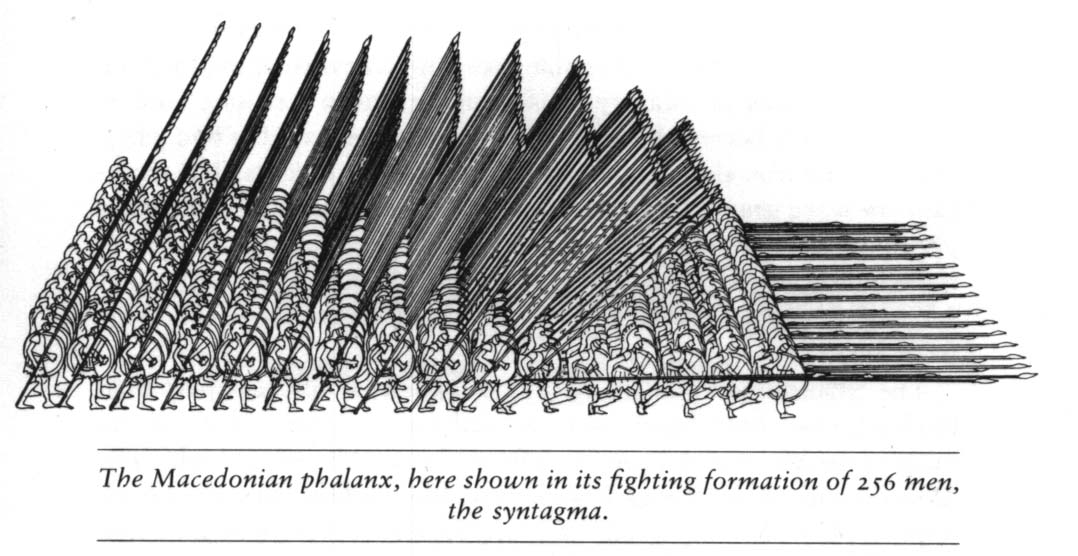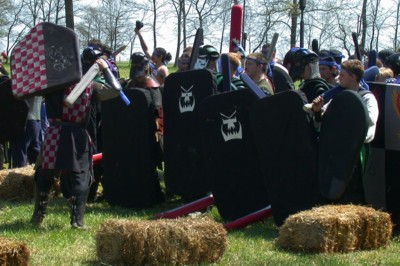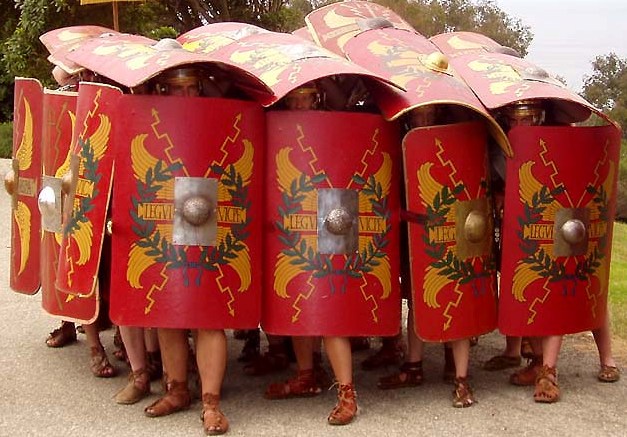Shield wall
"Shield wall" is a term used to describe a battlefield formation consisting of shields forming a protective outer layer or front rank.
History
The Greeks formed a shield wall known as the phalanx, composed of several ranks of warriors with large shields and up to 18' long pikes called sarissas. The sarissas would be arranged so that the pike heads would be at different distances, making it extremely dangerous for an enemy formation to try and close to melee distance. 
The Romans used a shield wall formation known as a testudo or turtle. This formation provided cover both to the front and flanks of the formation as well as providing overhead cover from missile weapons. There is a good example of a testudo in the first battle in the movie "Gladiator".
Shield walls in Belegarth

Shield walls are most often used in limited-width battles such as bridges and castle sieges. The majority of the large shields are normally placed in the first rank with the second and third ranks comprised of polearms and spears. This combined arms formation protects the spears and polearms from missiles and melee fighters while the long weapons can engage outside melee range, thereby protecting the shield fighters.
Rather than meet at the middle of a bridge, it is often beneficial to form a kill pocket at the edge of a bridge or castle door. The shield wall will form a semicircular formation around the end of the bridge and engage anyone trying to cross. The enemy is engaged from both sides as well as from the front.
During normal field battles, the two sides will normally form a single-rank shield wall as their beginning formations. As the battle progresses, the two sides will move in an attempt to gain a positional advantage and local numerical superiority, the goal being to eliminate the enemy with minimal casualties.

